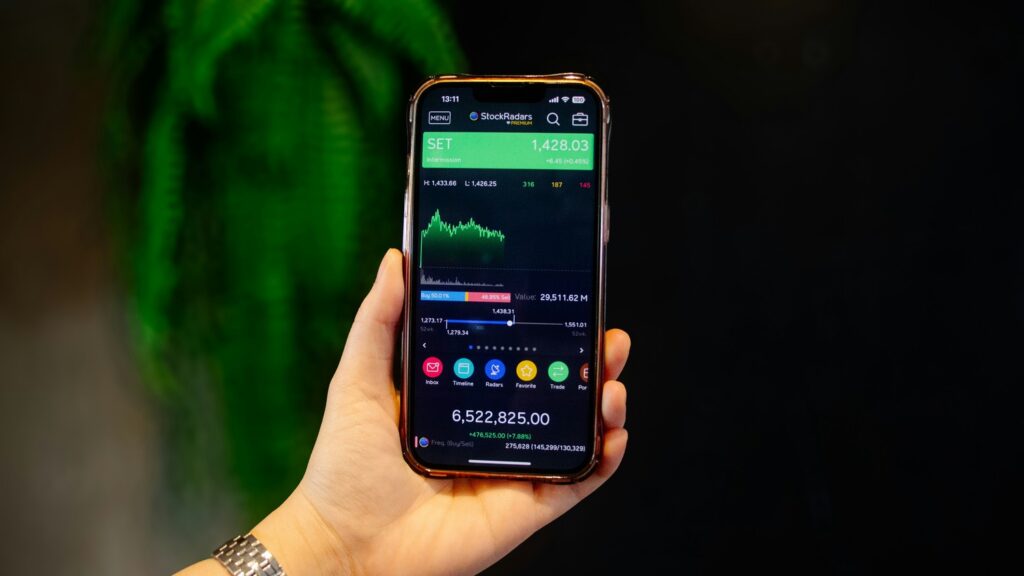English follows
בעקבות סימני החולשה במשק, עולם הבנקאות בארץ ובעולם מתמודד עם מציאות שונה וחדשה לבנקאים של העשור הנוכחי. בשורות הבאות ננסה לשפוך אור על המספרים שחשפו הבנקים הגדולים – הפועלים, לאומי, מזרחי טפחות, ודיסקונט. נצלול אל תוך המאזנים והנתונים, שלרוב – נראים כמסובכים להבנה בשביל חלק מקוראי הדוחות של הבנקים.
מי הוא הבנק שנמצא בעמדה הטובה ביותר לקראת היחלשות כלכלית במשק? מי מציג איתנות פיננסית נפלאה? ומי מהבנקים נסחר בתמחור זול באופן משמעותי? יצאנו לבדוק.
מבט ממעוף הציפור
ככלל, המערכת הבנקאית כולה מציגה נתונים מרשימים של התייעלות תפעולית, על ידי ירידה מתמדת ביחס היעילות (הוצאות תפעול ביחס להכנסות). הירידה ביחס היעילות בולטת בשל העליה בהכנסות מריבית, אך מדובר במגמה שהחלה עוד במחזור הכלכלי בו הריביות עמדו בטריטוריה נמוכה ביותר. ההתייעלות במערכת נובעת לאור צמצום מצבת העובדים וצמצום מספר הסניפים וגודלם.
עוד ניתן לומר על המערכת, כי מניות הבנקים בעת הנוכחית נסחרות בתמחור זול ביחס לרמות המחירים החציוניות ב-3 השנים האחרונות. אך אליה וקוץ בה – השוק לא נוטה להעניק רמות תמחור זולות לחינם. הגידול המערכתי בהפרשות להפסדי אשראי והקיטון בקצב הצמיחה של תיקי האשראי הביאו בשנה החולפת את משתתפי השוק לזנוח את מניות הבנקים לטובת ענפים צומחים אחרים. אבל לתמחורי המניות עוד נגיע בהמשך.
נתוני הרווחיות
בנק הפועלים פתח את עונת דוחות הבנקים בסערה, כאשר דיווח בשבוע שעבר על הכנסות בהיקף 21.3 מיליארד שקלים ורווחים של 7.3 מיליארד שקלים, או 5.5 ש"ח למניה. הבנק מציג את יחס היעילות (הוצאות תפעוליות לסך הכנסות) בסך של 38%. הרווח הנקי של הבנק משקף מכפיל רווח של 6.2 נכון לסגירה של יום המסחר הקודם. זול בהשוואה למכפיל הממוצע של 8 בשלוש השנים האחרונות.
דיסקונט דיווח על הכנסות של 16 מיליארד שקלים ורווח נקי של 4.1 מיליארד, כאשר הבנק מוביל את הטבלה ברמת ההכנסה לעובד שעומדת על 3.06 מליון שקלים לשנה. הרווח הנקי למניה עומד על 3.39 ש"ח, המשקף מכפיל על הרווח של 5.3. גם כאן, המכפיל נחשב לנמוך ביחס לנתון החציוני ב-3 השנים האחרונות אשר עומד על 8.5.
מזרחי טפחות, עם הכנסות בסך 14.7 מיליארד ש"ח ורווח של 4.9 מיליארד, מוביל את הטבלה עם יחס יעילות של 37.7%. רווח נקי למניה בסך 19.07 ש"ח המשקף מכפיל נוכחי על הרווח של 7, וזאת בהשוואה למכפיל חציוני של 9 על הרווח, ב-3 השנים האחרונות.
בנק לאומי, אשר הדוחות הכספים שלו פורסמו הבוקר, מדווח על הכנסות של 21.1 מיליארד ₪ ורווח של 7 מיליארד ₪, בנטרול ההפרשה החד פעמית הכרוכה בהפסד של National Valley. בכך, לאומי מציג את שיעור הרווחיות (רווח נקי לסך ההכנסות) הגבוה ביותר שעומד על 37.5%, בהשוואה לפועלים שמציג שיעור רווחיות העומד על 34.4%. לאומי גם מצטיין ביחס היעילות הנמוך ביותר במערכת. הרווח הנקי למניה עומד על 4.58, המשקף מכפיל על הרווח של 6.5, בהשוואה למכפיל חציוני של 7.8 ב 3 השנים האחרונות.
חשיבות ההון העצמי
בניגוד לתאגידים ריאליים, ההון העצמי בתאגידים פיננסיים ניתן למדידה באופן מהימן (יחסית), ולכן, בהקשרי ההון עצמי, משתתפי שוק רבים יבצעו השוואה של שני משתנים, אשר לוקחים אותו בחשבון: התשואה על ההון (ROE), נתון הבוחן רמת רווחיות, ומכפיל ההון (Price to book), נתון הבוחן רמות תמחור, בדומה למכפיל הרווח.
התשואה על ההון הגבוהה ביותר במערכת נזקפת לבנק מזרחי ועומדת על 19.1%, וזאת בהשוואה לממוצע משוקלל של 15% ביתר המערכת. חשוב לומר, כי תיאבון הסיכון של מזרחי טפחות נחשב לגבוה ביותר, ולפיכך, הוא מפצה על כך ברווחיות. ככל שההון העצמי של התאגיד יהיה ברמות נמוכות יותר, כך הבנק יוכל למקסם את התשואה שלו על ההון. בנקים אשר נקטו במדיניות דיבידנד שמרנית, שמרו על יתרת עודפים גבוהה בהון העצמי שהביאה לתשואה נמוכה על ההון.
אנו סבורים כי התשואות על ההון העצמי הנוכחיות במערכת אינן בנות קיימא לטווח הארוך, שכן הן תוצר של סביבת הריבית הגבוהה לצד מאמצי התייעלות.
רמות מחירי המניות – מניות הבנקים נחשבות לזולות
כאשר מנתחים את רמות המחירים של הבנקים ביחס לרמות ההון העצמי שלהם מגלים תמונה מעניינת. באופן פשטני, לאור העובדה כי ההון העצמי ניתן למדידה באופן מהימן, לכאורה, מחיר החברה בבורסה, צריך להיסחר בסביבות רמות ההון העצמי בספרים (לפי נתוני הדוחות הכספיים). אלא שבעת הנוכחית, ניתן לראות הנחות משמעותיות שהשוק מעניק למניות הבנקים ביחס לזה. לדוגמה, בנק הפועלים זוכה למכפיל הון של 0.86, כלומר, תמחור חסר של 14% על ההון עצמי ואפסייד של 16.2%.
התופעה נובעת מציפיות ומהערכות הסיכון של משתתפי השוק כיום. בנקים, יכולים להיסחר גם לנצח מתחת להון העצמי כתוצאה מנסיבות שונות, לרבות העדר צמיחה או חשיפה יתרה לסיכון. אך כאן להערכתנו מדובר בתמחור חסר מערכתי – הן ביחס לשוק (Price to book), והן ביחס לרמות מכפיל ההון המוצדק (Justified P/B), הנובע משקלול של ציפיות צמיחה פרמננטיות ושיעורי היוון.
הבנקים נערכים עם רזרבות החירום
הפרשות להפסדי אשראי הן טכניקה חשבונאית המאפשרת לתאגיד פיננסי להתחשב בהפסדים צפויים מכשלי אשראי החזויים לפי מודלים סטטיסטיים. כלומר, לא קיים צורך שהפסד יתממש בפועל לצורך הכרה בו בדוח הכספי. כך, בנק יכול להיערך עם "רזרבות" למקרה בו הפסד יתממש בפועל. במקרה שבו ההפסד לא מתממש, ההפרשת היא ברת השבה לשורת ההכנסות – בעתיד.
בנק הפועלים נכנס אל תוך 2024 עם ההפרשה הגבוהה ביותר במערכת, בסך 1.92% מהתיק. אלו שיעורי הפרשה גבוהים מאוד במערכת הבנקאית ומזכירים יותר חברת אשראי חוץ בנקאי קטנה. לפיכך, אנו מבינים כי הפועלים נכנס לשנת 2024 בגישה שמתאפיינת בשמרנות יתרה. צעד נוסף משמעותי של הפועלים היא הקטנת מינוף על ידי רכישה עצמית של אגרות חוב.
הלימות ההון
הבנקים בישראל מתאפיינים בשיעורי הלימות הון גבוהים, כלומר, מציגים רמות נזילות גבוהות של נכסים באיכות טובה ביחס לתזרים היוצא שצפוי לקרות בתרחיש קיצון (LCR-Liquidity Coverage Ratio). וגם, מתאפיינים ביחסים גבוהים בין המקורות הכספיים היציבים (פקדונות יציבים), לשימושים שהם צפויים לממן בשנה הקרובה. למרות זאת, על המשקיע לדעת, כי בנק מזרחי טפחות מתאפיין בשיעור פיקדונות קמעונאיים (של משקי בית לרוב) ברמה הנמוכה ביותר, ויחס המימון היציב הנמוך במערכת שעומד על 114%. לשם ההשוואה שיעור הפיקדונות הקמעונאים של בנק הפועלים עומד על 58%.
חשיבותם של הפקדונות הקמעונאיים גבוהה, בשל תדירות הפדיון הנמוכה שלהם.
הרגישות לשינויים בריבית
אחת הנקודות הקריטיות הנוגעות לניהול הסיכונים בבנק הוא סיכון המח"מ, כלומר, הרגישות של שווי הנכסים (הלוואות) והרגישות של שווי ההתחייבויות (פקדונות) לשינויים בריבית. זו למעשה הייתה הסיבה הרווחת למשבר אשר פקד את הבנקים האזוריים בארה"ב במהלך השנה שעברה.
בנק מזרחי טפחות מציג את דרגות הרגישות הגבוהות ביותר של הנכסים ביחס לשווי שוק שלו. במצב בו תתרחש עלייה של עקום תשואות האג"ח באופן מקביל לכל אורכו בשיעור של 1%, הבנק יחווה ירידת ערך של 1.582 מיליארד שקלים בשווי השוק של נכסים. מדובר ב-5.7% מהשווי של הבנק בבורסה. במקרה של ירידת תשואות לפדיון בטווח הקצר ועליה בתשואות בחלקו הארוך של העקום (התללה), הבנק צפוי לחוות ירידת ערך של 1.26 מיליארד ש"ח בשווי ההוגן של נכסיו, שינוי המשקף 4.61%- בשווי בוורסה נכון לכתיבת שורות אלה.
לסיכום, בהתבוננות על המערכת אנחנו רואים כי חלה התמתנות משמעותית בצמיחת תיק האשראי, לרבות בסגמנט האשראי הצרכני והאשראי לעסקים קטנים. העדר הצמיחה של תיק האשראי נובע מתיאבון סיכון נמוך יותר של המערכת. בשל כך, הבנקים זוכים לרמות מחירים זולות, שלהערכתנו צפויות להתאזן, בעתיד הנראה לעין. עם זאת, על משקיע אקטיבי לבחון בקפידה לא רק את הרווחיות הצפויה של תיק האשראי אלא גם את הסיכון הגלום בו.
| בנק | הכנסה לעובד | שיעור רווח | ROE | יחס יעילות | הפרשה | צמיחת תיק אשראי | תיק אשראי (במיליארדים) | P/B | justified P/B | Justified leading PE |
| פועלים | ₪ 2,486,279 | 34.42% | 15.00% | 38.00% | 0.0192 | 4.80% | 404 | 0.86 | 1.29 | 11.8 |
| דיסקונט | ₪ 3,060,548 | 26.08% | 15.70% | 49.60% | 0.016 | 7.60% | 258.7 | 0.77 | 1.29 | 11.8 |
| מזרחי | ₪ 2,067,711 | 33.22% | 19.10% | 37.73% | 0.0124 | 5.80% | 325 | 1.33 | 1.43 | 13.0 |
| לאומי | ₪ 2,659,884 | 37.50% | 13.70% | 32.60% | 0.0158 | 9.00% | 419.4 | 0.82 | 1.29 | 11.8 |
עיבוד נתונים: פלקון ה.ח ייעוץ כלכלי
הכותב הוא שחר חן, מנהל ההשקעות של קבוצת פלקון קפיטל, ומיוצרי הפודקאסט הכלכלי "ממעוף הציפור".
Banking Sector Analysis: Unveiling Key Trends and Challenges
In light of the economic vulnerabilities, the banking landscape, both domestically and globally, grapples with a distinct and novel reality for banks in the current decade. In the following analysis, we shed light on the figures revealed by major banks – Bank Hapoalim, Bank Leumi, Mizrahi Tefahot, and Discount Bank. Delving into the balance sheets and data, which often appear complex to grasp for a significant portion of bank report readers.
Assessing Financial Resilience:
Generally, the entire banking system demonstrates impressive operational efficiency improvements, marked by a steady decline in the efficiency ratio (operating expenses to income). The pronounced decline in efficiency ratio is due to the rise in interest income, a trend that began in the economic cycle where interest rates stood at their lowest. System-wide optimization stems from workforce reduction, branch closures, and resizing.
Furthermore, bank stocks are currently trading at significantly lower prices compared to median price levels over the past 3 years. However, this discount doesn't come without its thorns. The market tends not to provide low pricing levels for free. Systematic increases in credit provisions and the slowdown in credit portfolio growth have led market participants in the past year to abandon bank stocks in favor of other growing sectors. But more on stock pricing later.
Profitability Metrics:
Bank Hapoalim kicked off the bank reporting season with a bang, reporting revenues of 21.3 billion NIS and profits of 7.3 billion NIS, or 5.5 NIS per share. The bank presents an efficiency ratio (operating expenses to total income) of 38%. The bank's net profit reflects a multiple of 6.2 earnings as of the last trading day, cheap compared to the average multiple of 8 over the last three years.
Discount Bank reported revenues of 16 billion NIS and a net profit of 4.1 billion NIS. The bank leads the table in terms of revenue per employee, standing at 3.06 million NIS per annum. Net profit per share stands at 3.39 NIS, reflecting a multiple of 5.3. Here too, the multiple is considered low compared to the median over the past 3 years, which stands at 8.5.
Mizrahi Tefahot, with revenues of 14.7 billion NIS and a profit of 4.9 billion NIS, leads the table with an efficiency ratio of 37.7%. Net profit per share stands at 19.07 NIS, reflecting a current multiple of 7 compared to a median multiple of 9 over the past 3 years.
Bank Leumi, whose financial reports were published this morning, reports revenues of 21.1 billion NIS and a profit of 7 billion NIS. The bank presents the highest profitability ratio (net profit to total income) standing at 37.5%, compared to Poalim which presents a profitability ratio of 34.4%. Leumi also stands out with the lowest efficiency ratio in the system. Net profit per share stands at 4.58, reflecting a multiple of 6.5, compared to a median multiple of 7.8 over the past 3 years.
Importance of Equity Capital:
Unlike non-financial corporations, equity capital in financial firms can be measured relatively reliably. Market participants often compare two variables: Return on Equity (ROE), a measure of profitability, and Price to Book ratio, a measure of valuation, similar to Price to Earnings.
The highest ROE in the system is attributed to Mizrahi Tefahot, standing at 19.1%, compared to a market-weighted average of 15%. It's important to note that Mizrahi Tefahot's risk appetite is considered the highest, thus compensating for it with profitability. As the equity capital of the corporation decreases, the bank can maximize its return on equity. Banks that have adopted a conservative dividend policy, maintaining high equity capital balances, have led to low returns on equity.
We believe that current returns on equity in the system are not sustainable in the long run, as they are a product of the high-interest rate environment alongside efficiency efforts.
Stock Price Levels – Bank Stocks Considered Cheap:
Analyzing the price levels of banks relative to their equity capital reveals an interesting picture. In essence, since equity capital can be measured relatively reliably, the company's stock on the stock exchange should trade around book value (according to financial statements). However, currently, significant discounts are observed in the market for bank stocks relative to this. For example, Bank Hapoalim has a book value multiple of 0.86, meaning an undervaluation of 14% on equity and an underprice of 16.2%.
The phenomenon arises from market expectations and risk perceptions today. Banks can trade perpetually below equity capital due to various circumstances, including lack of growth or excessive exposure to risk. However, in our estimation, this is a systemic underpricing – both in relation to the market (Price to Book), and in relation to justified multiples (Justified P/B), derived from weighted expectations of permanent growth and risk rates.
Banks Positioned with Emergency Reserves:
Credit loss provisions are an accounting technique that allows a financial entity to account for expected losses from credit defaults predicted by statistical models. In other words, an actual loss does not need to occur for it to be recognized in the financial statements. Thus, a bank can position itself with "reserves" for a case where an actual loss occurs. In cases where the loss does not materialize, the provision is returned to the income statement – in the future.
Bank Hapoalim enters 2024 with the highest provision at 1.92% of the portfolio. These provisioning rates are very high in the banking system and resemble more a small non-bank financial institution. Therefore, we understand that Hapoalim enters 2024 with excessive caution. Another significant step by Hapoalim is the reduction of the minimum by buying back bonds.
Capital Adequacy Ratios:
Israeli banks are characterized by high capital adequacy ratios, presenting high-quality liquid assets compared to expected outgoing flows in extreme scenarios (LCR-Liquidity Coverage Ratio). They also feature high ratios between stable financial sources (stable deposits) and expected uses that are expected to fund in the coming year. However, it is important for investors to note that Mizrahi Tefahot is characterized by the lowest ratio of institutional deposits (mostly household savings) and the lowest stable funding ratio in the system at 114%. For comparison, Bank Hapoalim's retail deposit ratio stands at 58%.
The significance of stable retail deposits is high due to their low redemption frequency.
Interest Rate Sensitivity
One critical aspect of risk management in banks is the interest rate risk, namely, the sensitivity of asset values (loans) and liabilities values (deposits) to interest rate changes. This was, in fact, a prevailing cause of the crisis that affected regional banks in the U.S. last year.
Mizrahi Tefahot Bank presents the highest levels of asset modified duration relative to its market value. In a scenario where bond yield curve rise by 1% across all maturities (parallel shift), the bank would experience a market value decline of 1.582 billion shekels, representing 5.7% of its market value on the stock exchange. In the event of short-term yield declines and long-term yield increases (steepening yield curve), the bank is expected to undergo a fair value decline of 1.26 billion shekels, reflecting a 4.61% change in fair value – as per the values in this article.
In summary, a significant slowdown in credit portfolio growth is observed, including in consumer credit and credit to small businesses. The lack of credit portfolio growth stems from the lower risk appetite of the system. Consequently, banks enjoy discounted price levels, which we expect to stabilize in the foreseeable future. However, active investors should thoroughly examine not only the expected profitability of the credit portfolio but also the inherent risk.
The author is Shahar Hen, Investment Manager at Falcon Capital Group, and co-host of the economic podcast "From the Bird's eye view."












